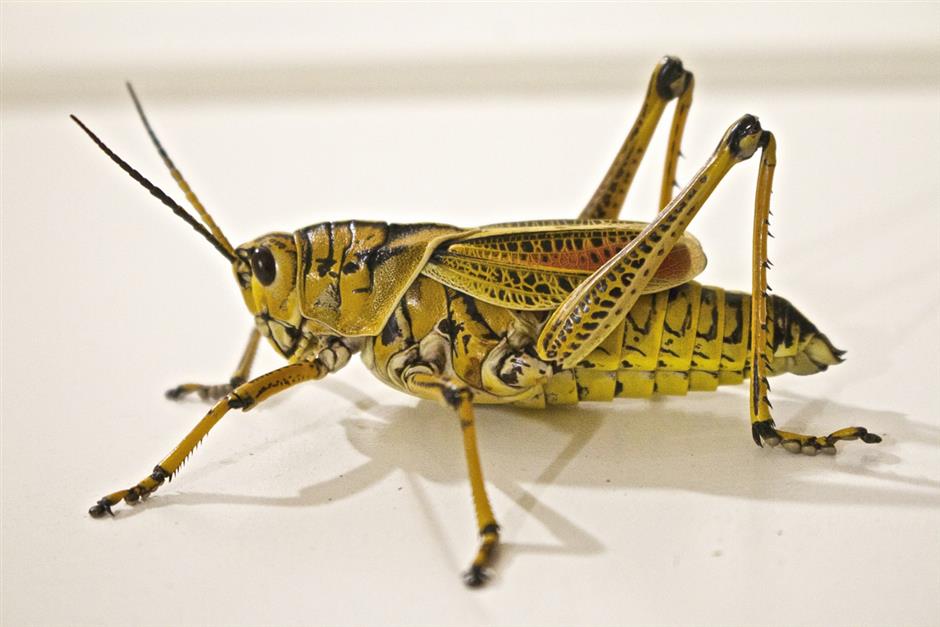
How many sources of protein can you name off the top of your head?
There are animal proteins like meat, various forms of dairy and plant-based alternatives. You can buy them as whole foods, snacks, in a shake, as a powder, in a can—the list grows daily.
However, a new source of protein is becoming increasingly popular and it’s one that many people might not consider: insects.
The Legacy of Edible Insects
The eating of insects is called entomophagy. It’s derived from the Greek words for insect and eat. The human species has consumed insects for a majority of our history and there are nearly 2,000 edible species to add to your growing protein list.[1]
While using insects as a food source may seem like a novelty to many who live in North America or Europe, they are consumed regularly by nearly 80% of the world’s population and have remained a reliable source of nutrients.[2]
Advertisement
And guess what? You are probably already eating insects without even knowing it.
In the United States, the Federal Department of Agriculture’s food standards allows for a certain amount of insects to make it past production, given they are a vital part of the production process.
For example, the FDA allows cinnamon to contain an average of 400 or more insect fragments per 50 grams. Wheat flour may contain an average of 75 or more insect fragments per 50 grams, and chocolate can have an average of 60 or more insect fragments per 100 grams.[3]
Nutrient Powerhouses
Insects contain immense amounts of protein in relation to their mass. On average, they are 50% protein by weight.[4]
If you compare the nutrition profile of crickets to beef, crickets contain nearly twice the amount of protein.[5] They have a rich amino acid profile and contain essential nutrients such as iron, calcium, B6, B12, omega-3 fats, magnesium, and zinc.[6] Crickets are also a whole food source and when used in a meal, nearly 80% of the original cricket is used.
Advertisement
The final product of beef, however, is only about 40% of the original animal, making crickets a much more efficient protein source with far less waste.[7]
Sustainability
As the world's population continues to grow, finding sustainable methods for food is increasingly important.
The same amount of feed needed to yield 60 lbs of cricket protein, outputs 30 lbs of chicken, 15 lbs of pork and only 5 lbs of beef.
The amount of water used to produce cricket-based products is a fraction of that to produce other proteins. For example, one gallon of water will yield the same amount of protein from crickets as the 567 gallons of water it would take to produce chicken protein and 2,000 gallons for cows.[8]
Time Period
The lifespan of an insect means a faster transition from egg to the final stage (often just a matter of months) which means a faster production. Insects are also better at converting food into edible tissue and can survive on a much broader range of plants than most livestock (including many things humans can’t eat), which allows for more available resources in supporting their production.[9]
Advertisement
In comparison, the smaller amount of resources needed to produce insect protein makes their efficiency as a food source nearly 20 times that of cows.[10]
Insect Protein Sources
The most common insect protein source is crickets, due to their familiarity with many North American and European audiences. They are already commercially available in those countries and can be easily turned into flours for cooking or shelf-stable items.[11] While they aren’t the only option, they are often the most prevalent.
Interested in trying some insects as your next protein source? Check out EXO Protein for cricket protein bars and bites. Chapul offers protein bars along with protein powders and even chocolate bars. Amazon features a whole variety of cricket baking powders for all your cooking needs. Wondering what recipes work best? Try The Eat-a-Bug Cookbook, by David George Gordan, or Eat Grub, by Shami Radia and Neil Whippey.
Curious about why protein is important, from any source, and how to maximize protein in your diet? Work with a WAG Coach to learn more about what’s best for your body and your goals.
References:
Advertisement
- Scott-Dixon, K. (n.d.) Edible bugs and insects: Are these high protein critters the future of food? Precision Nutrition. Retrieved from https://www.precisionnutrition.com/eating-bugs [1, 4, 9, 10]
- Bitty Foods. (2017). FAQ. Bitty Foods. Retrieved from https://www.bittyfoods.com/faq/ [2, 11]
- Federal Department of Agriculture. (2018, Oct 26). Defect levels handbook. Sanitation & Transportation. [3] Retrieved from fda.gov
- Crik Nutrition. (2019). Why cricket protein? Crik Nutrition. [5, 6, 7] Retrieved from https://criknutrition.com/pages/why-cricket-protein-powder
- EXO. (2019). Why crickets? EXO. [8] Retrieved from https://exoprotein.com/pages/why-crickets
Schedule a Free Intro Call
Working Against Gravity has led the macro tracking and health space for over a decade. Our team doesn’t just understand the science of nutrition—we’ve spent years mastering the art of tailoring it to fit your life. That means no cookie-cutter plans, just real strategies that have worked for over 30,000 people.
Schedule a free call with our team to learn how working with a 1-on-1 WAG coach will help you reach your goals.



